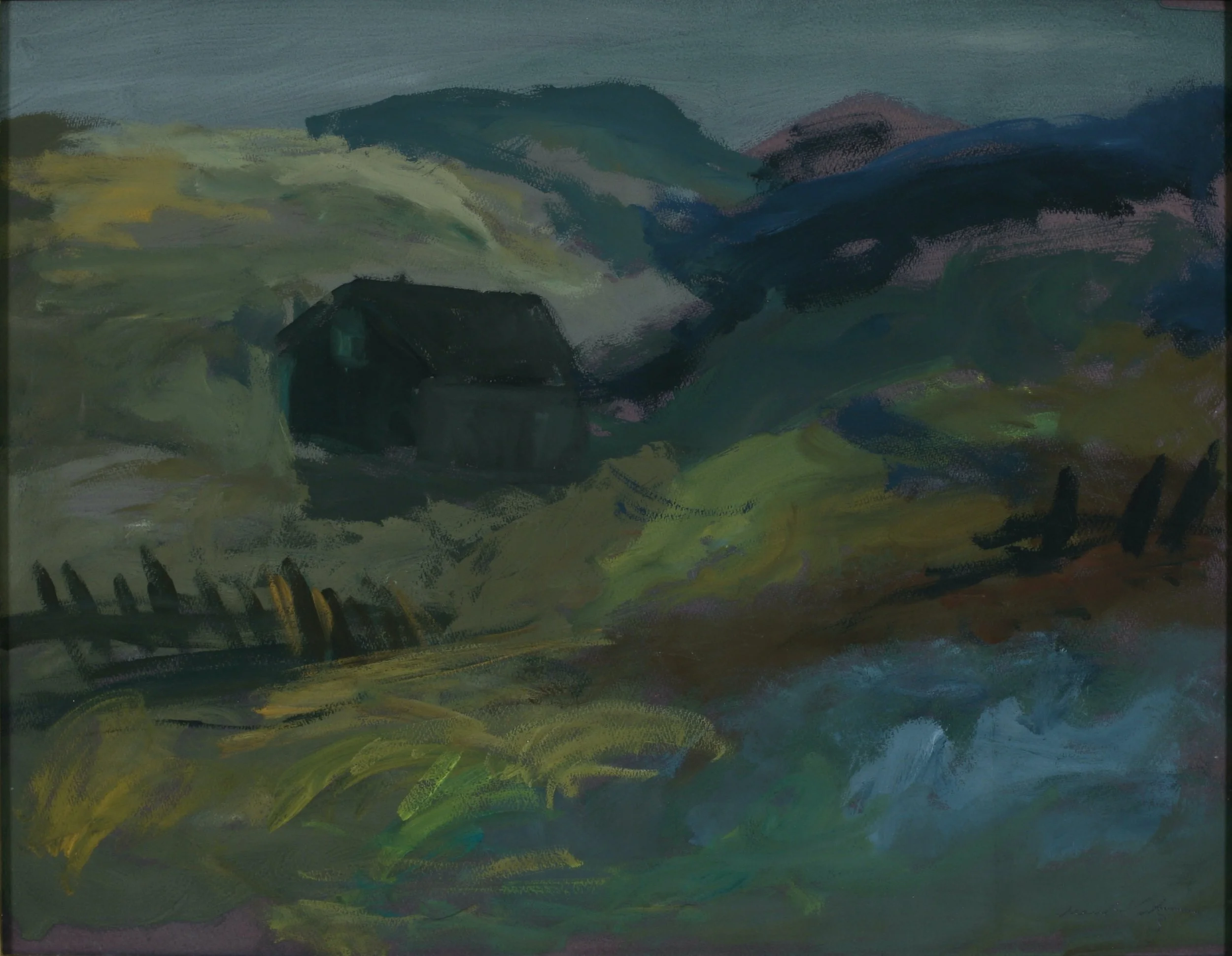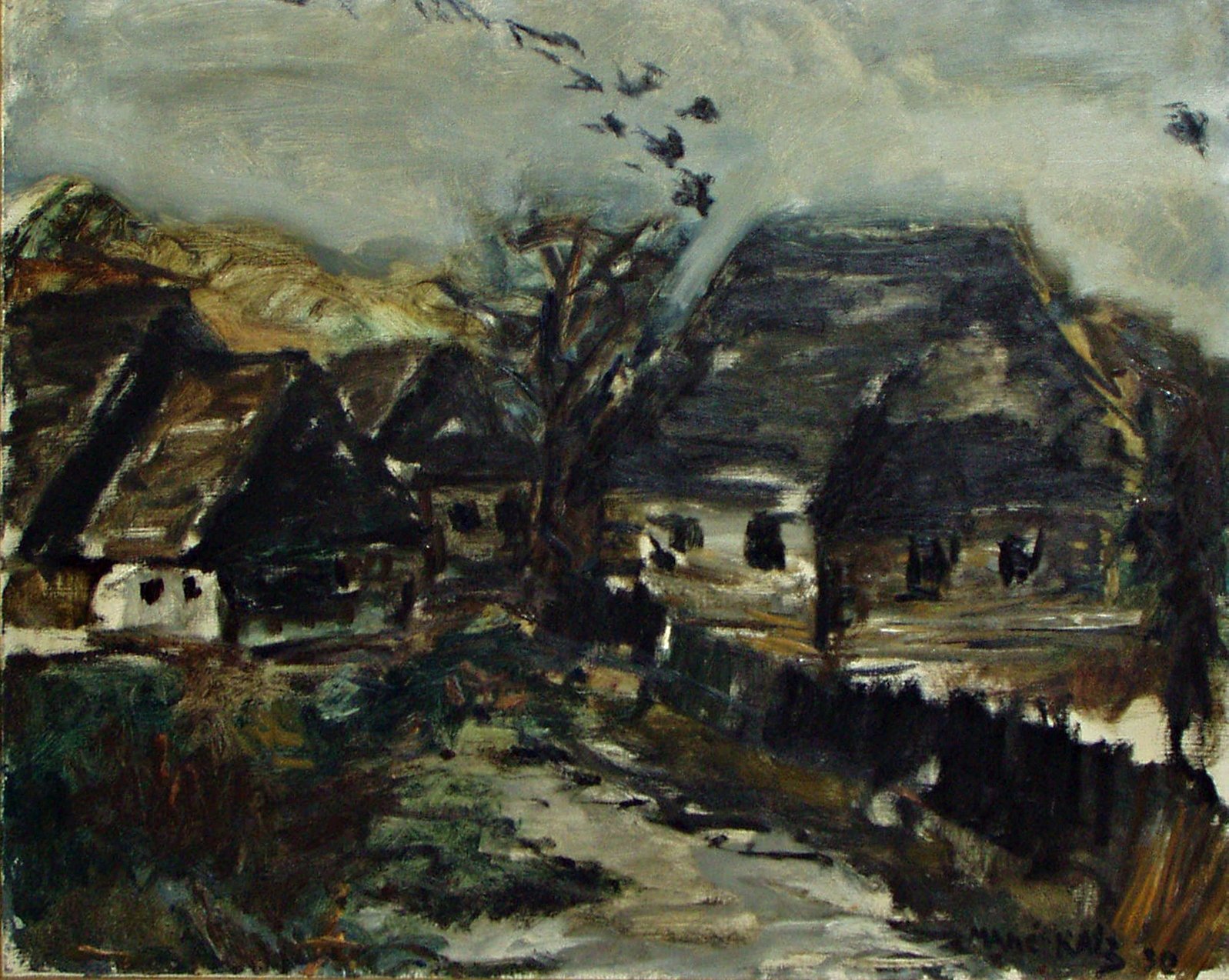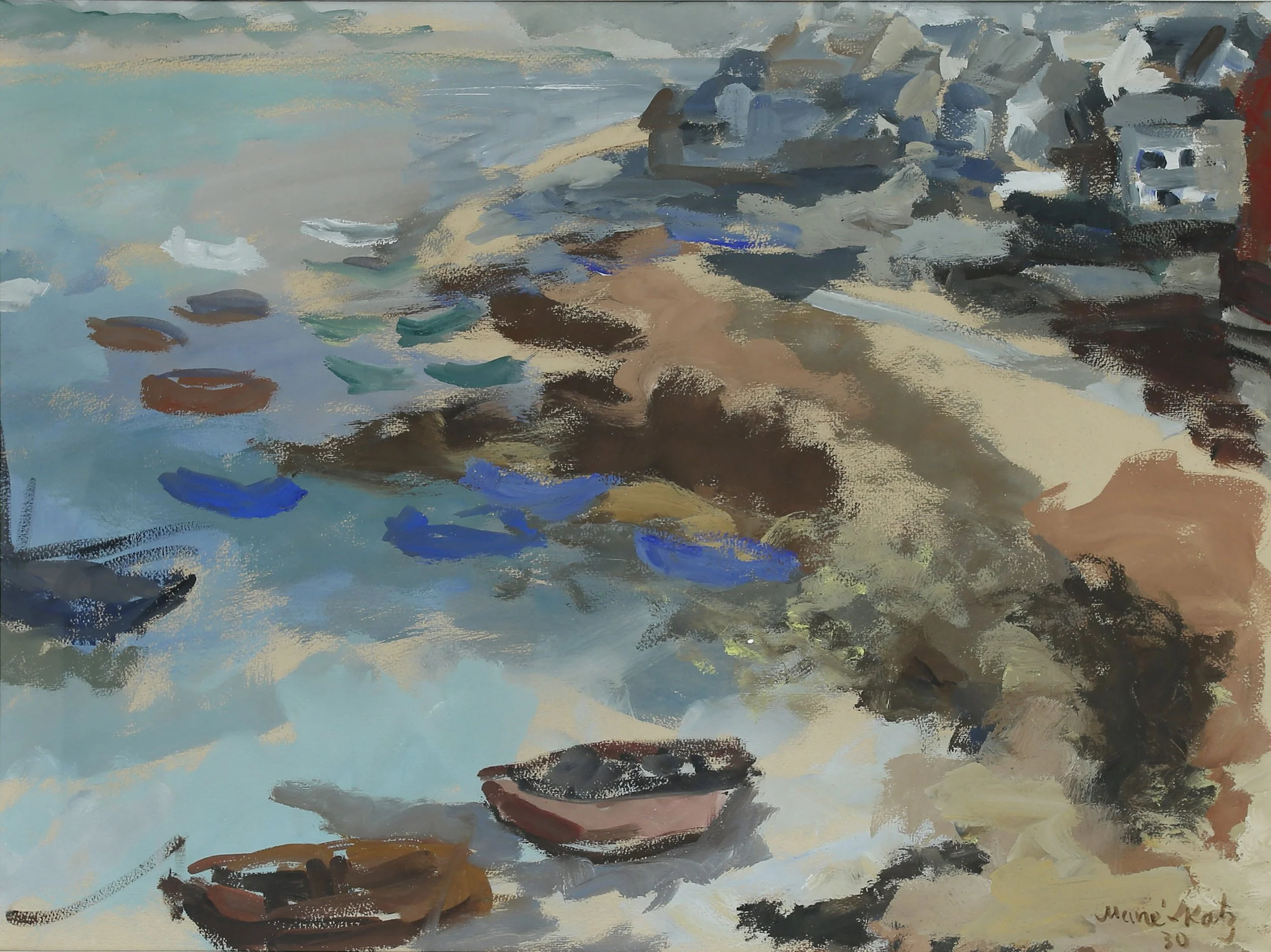Emmanuel Mané-Katz (Jewish-Ukrainian, 1894-1962)
Biography
Mané-Katz was a Jewish-Ukrainian painter, born in Kremenchuk, Ukraine. At the age of 19, he moved to Paris to study at the École des Beaux-Arts but then moved to Russia during the First World War. He worked and exhibited in Petrograd, and moved back to Kremenchuk following the October Revolution.
He returned to Paris during the Civil War, where he befriended Pablo Picasso and reconnected with Chaim Soutine and Marc Chagall whom he met while studying at the École des Beaux-Arts in 1913. Mané-Katz is best known in the context of École de Paris. Together with other Jewish artists who lived and worked in Paris in the early twentieth century, he is sometimes considered to be part of a group referred to specifically as the Jewish School of Paris.
Although Mané-Katz painted many landscapes and flower studies, his artistic emphasis lay in the depictions of Jewish themes. His oil paintings often feature religious and community scenes, in a way he becomes the interpreter of the Jewish communities in central and eastern Europe. While remaining loyal to his subject matter, Mané-Katz was spiritually affected by Rembrandt but looked to Gauguin, Cézanne, and the Fauvists in terms of technique.
From 1921 onwards Mané-Katz exhibited in the main annual Paris salons. In 1953 he donated eight of his paintings to the Glitzenstein Museum at Safed in Israel. Later he bequeathed his paintings alongside a personal collection of Jewish ethnography to the city of Haifa. The Mayor of Haifa provided Mané-Katz with a building to house his work, now known as the Mané-Katz Museum.
Related artists
Adolphe Feder / Max Band / Pinchus Kremegne / Alfred Aberdam / Henri Epstein / Joseph Pressmane / Issachar Ryback
Available works
Please see below the selection of available original artworks by Emmanuel Mané-Katz.
Emmanuel Mané-Katz, Ukrainian Landscape. Oil on canvas. 73 by 92 cm.
Emmanuel Mané-Katz, Ukrainian Village, 1931. Oil on canvas. 73,5 by 92,5 cm.
Emmanuel Mané-Katz, Carpathian Landscape, 1930. Oil on canvas. 73 by 92 cm.
Emmanuel Mané-Katz, Landscape with barques, 1930. Gouache on paper. 46,5 by 61,8 cm.





